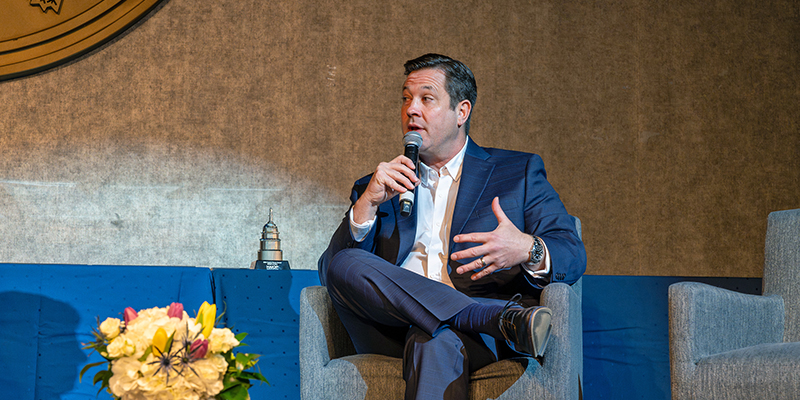Opportunity zones have made headlines in recent years, but this investment program introduced in the Tax Cuts and Jobs Act of 2017 as a means to advance the development of economically distressed communities remains a subject of misunderstanding and misconceptions. In a session at CRE.Converge Virtual 2020, a panel of experts shared their real-world experience with opportunity zone (OZ) investments and what factors can contribute to a successful outcome.
According to the Urban-Brookings Tax Policy Center, 12% of U.S. Census tracts – 8,762 tracts – were designated by the U.S. Department of the Treasury as OZs. To date, a reported 580 OZ funds have raised a cumulative $12.05 billion in equity. The IRS calls OZs “an economic development tool — that is, they are designed to spur economic development and job creation in distressed communities.”
“We’re now two years into the opportunity zone marketplace, and hearing and learning about the taxes and what they can and can’t do,” said session moderator Christopher Coes, vice president of land use and development for LOCUS | Smart Growth America. “What are the myths that people need to know, two years in?”
“There was an expectation that capital was just going to gush into the opportunity zone space, therefore there would be an overabundance of capital that would reduce the cost of capital to develop in the zones – that has not proven to be true,” said Baker Tilly Partner Michael Fitzpatrick. He attributed that in part to a lack of education on the value of OZ benefits, as well as general awareness of the program and how it works. “Those factors have kept investors from rushing into the space,” he said.
Another common myth, according to Fitzpatrick, is that OZ tax benefits – deferral of capital gain on the initial investment, and complete exemption of capital gains on the sale of the investment– are just “the icing on the cake.” When you run the numbers, he said, the tax savings may not seem substantial at first; the real economic benefit comes from holding on to the investment for 10 years or more.
“To give you a sense of magnitude: Over a 10-year period, that permanent tax savings without captured appreciation or capital gains could exceed 55% of their invested capital,” Fitzpatrick said. “That is significant – that is not just icing on the cake!”
Javelin 19 Investments President Jill Homan said her group has experience with the entire ecosystem of OZs. “Some things we’ve learned are it’s important to recognize from an investor standpoint this is tax-advantaged private-equity investing … People are leading with the opportunity zone tax implications when what needs to first underlie this benefit is that it’s an investment,” she said. “If the investment doesn’t produce an IRR – meaning an internal rate of return of capital – then that’s a different tax benefit called ‘philanthropy.’”
In addition to making financial sense, the projects need to be undertaken by an experienced team or they will have trouble attracting capital, Homan said. “One of the things that I’ve learned is that at the onset, fund sponsors thought that the hardest part about OZs was setting up the fund, and then the money would come, but that’s not the case.”
“I think every single investor who is looking at investing more than a million dollars in real estate in some capacity should consider opportunity zones,” said Homan. “It might not be a fit for them, but I think this is one of the most significant tax benefits in a generation … I’m very optimistic about the marketplace and the amount of capital that is using OZs.”
“Since we’re so early in the process, there was kind of a Gold Rush mindset” initially with big fund formations in major metro markets, said Avison Young Senior Vice President Michael O’Mara. “I started to look at second-tier cities and communities around the country, knowing they weren’t going to be very attractive initially for funds to form or for investors. I feel like there’s a big need to work with the local economic development communities and agencies … When you get into the second-tier and tertiary rural markets, they declared their OZs but they really don’t know what they have in place that would attract investors and capital.”
O’Mara said he has spent time working to bring all of the “pieces of the puzzle” together for the various stakeholders involved in a particular OZ. There is huge opportunity in OZs, but also risk, according to O’Mara. “You have to make sure the deal underwrites, first and foremost, on a traditional basis.”
“There is certainly risk, and I do believe that some zones probably will not be able to attract investors for a variety of reasons, but I think that there a lot of jewels out there waiting to be structured,” said O’Mara.
The top metros do get the bulk of the OZ attention, agreed Coes, but as his research has shown, some “bubble” communities – emerging walkable urban places – have the right economic development approach and are “investment ready.”
Coes asked the panel: If you’re considering an OZ for potential investment, where should you start?
“Start by learning. Get engaged with the community,” Fitzpatrick said. “Learn what they’re looking for and what their objectives are, and provide a little education about what you’re looking to accomplish as a developer, so you can create a win-win. It’s not just about affordable housing; there are other tangible, measurable outcomes for communities. Part of that, then, is trying to quantify those outcomes so you can show that your project is bringing a benefit net-net to the community.”
This post is brought to you by JLL, the Social Media and Conference Blog sponsor of NAIOP’s CRE.Converge Virtual 2020. Learn more about JLL at www.us.jll.com or www.jll.ca.















